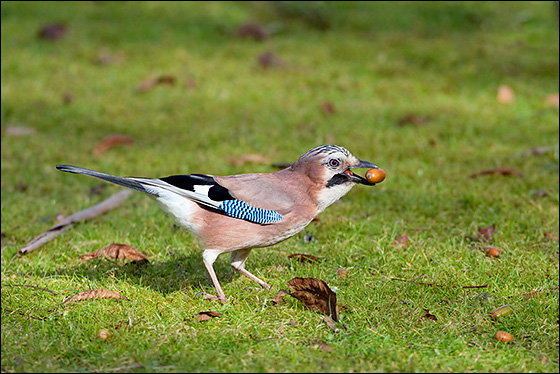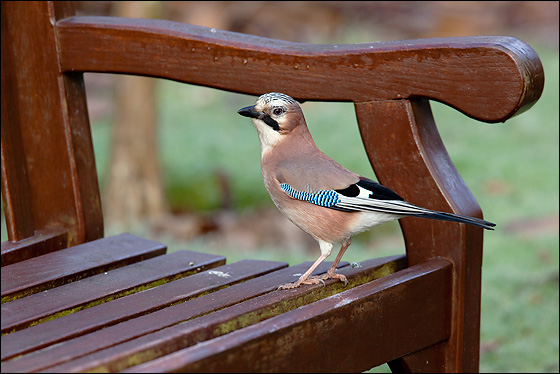Eurasian Jay (Garrulus glandarius)
Much can be learnt about the Jay simply from its English and scientific names. The name “Jay” spoken angrily in a loud voice approximates to this bird’s harsh call, a familiar sound that often breaks the silence of a wood in autumn and winter. “Garrulus”, the Latin word for talkative, might seem a little exaggerated, but in fact the Jay has a wide and well used vocabulary besides its screech. In spring it utters a sweet warble under its breath, a song containing many imitations of local birds.
As for glandarius, that means “of the acorn”, and it refers to the intimate relationship between the Jay and the oak tree (Quercus spp). The link is most obvious between late September and early November, when Jays collect acorns for their winter stores. Each Jay or pair of Jays lives in a permanent home range that may or may not include a good stand of oaks. If it doesn’t the birds must commute to the nearest wood to get their provisions, which may involve a one-way journey of 4km or even more. They arrive at the wood and generally fetch the acorns straight off the trees, before they have fallen. They pick up between 3 and 9 (9 for long journeys, some contained within the oesophagus) and return to the home range, where they hide each one in a separate site. The acorn is worked under leaf litter, among roots, into the soil or sometimes into a bark fissure, then the evidence is concealed and the precise spot memorised. In all, a Jay will collect and hide about 5000 acorns in all.
Jays are omnivores, taking all kinds of food throughout the year. In spring and summer they chiefly eat insects, especially caterpillars and beetles, plus a few eggs and nestlings of woodland birds. In autumn and winter they will feed on all sorts of nuts and fruits besides acorns. One might be tempted, then, to wonder why they store so much food of a particular type (they do sometimes store other fruits). The answer must be that the caches are a useful insurance against general food shortage; buried acorns do not spoil quickly, and Jays can retrieve them as and when required for months afterwards. Indeed, they often feed them to their youngsters after more than half a year in the soil.


